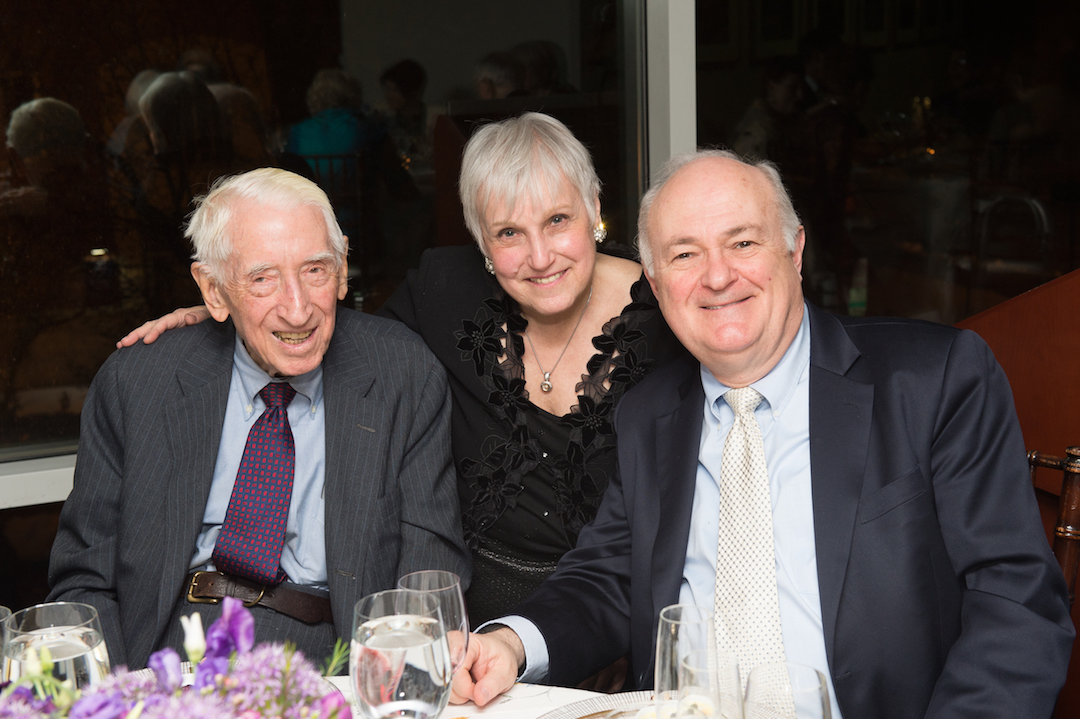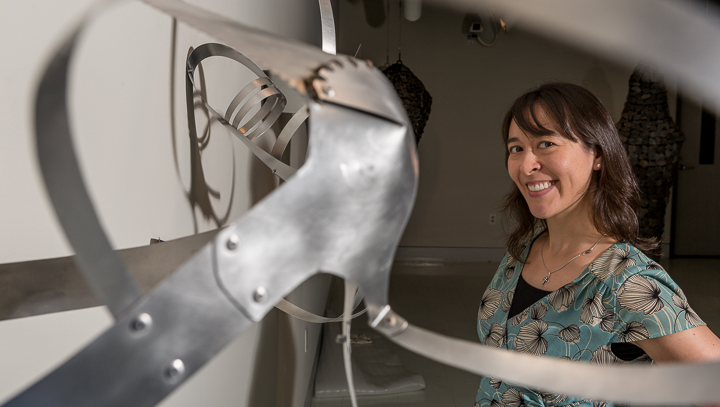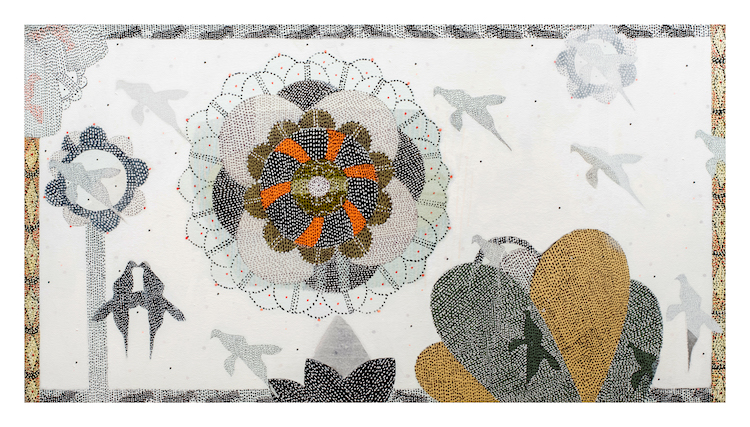Since opening, the Luther W. Brady Art Gallery has raised the profile of the arts on the George Washington University campus, hosting exhibitions that feature the work of renowned artists such as Howard Hodgkin, Jules Olitski and Utagawa Hiroshige. The gallery modeled its mission of contributing to the GW community’s cultural life after the Dimock Gallery, a groundbreaking arts space and educational gallery on campus from 1967 to 2012.
The Brady Art Gallery was dedicated in honor of its founding patron, oncologist Luther W. Brady, B.A. ‘46, M.D. ’48, in 2002. Earlier this month, Dr. Brady and members of the arts community celebrated the gallery’s 15-year milestone with a reception attended by President Steven Knapp; philanthropist and honorary degree recipient Clarice Smith, B.A. ’76, M.F.A. ’79; and artists Glenn Goldberg and Sean Scully, among others. Both Dr. Brady and Mr. Goldberg were honored at the benefit. The event also included an announcement that the gallery will eventually move into the Corcoran School of the Arts and Design building.
George Washington Today spoke with Director and Chief Curator of University Galleries Lenore Miller following the event to discuss the gallery’s history, past exhibitions, influence on the arts community and future at the Corcoran School.
Q: What did you envision for the Brady Art Gallery, and how did it continue the mission of the Dimock Gallery?
A: The Dimock Gallery was on the cultural scene for nearly 50 years as an educational gallery here at GW. It was the only art gallery on campus for much of its history from 1967 to 2012. As such, both student art and faculty art exhibitions were presented and also groundbreaking exhibitions researched and often curated with art history faculty such as “Temples of Gold,” “Crowns of Silver” and “Howard Hodgkin Prints: Vision and Collaboration.” In Lisner Auditorium, performances and audiences often coincided, such as the many flamenco festivals that were held that engendered exhibitions of Spanish themes, such as “Goya’s Los Caprichos” series of prints.
The mission of Dimock Gallery changed to solely providing students with hands-on exhibitions under the Department of Fine Arts and Art History in 2000, when the new University Art Gallery opened in the MPA Building, later dedicated as the Luther W. Brady Art Gallery in 2002. So, the mission to care for the GW collection of over 4,000 artifacts and educational exhibitions continued, but the focus on showing student art changed, as patronage has grown to support exhibitions that presented icons of the art world.
Q: How has the Luther W. Brady Art Gallery evolved since 2002 and impacted the arts community at GW?
A: The Luther W. Brady Art Gallery is an educational gallery and the professional showcase for art at GW. During the academic year, we present exhibitions including university-related shows and permanent collection exhibitions, as well as shows of historical and contemporary significance, often with a focus on the Washington area. The gallery also administers the university's Permanent Collection, which includes important paintings, sculptures, graphics, textiles, ceramics, historic furnishings and photographs. Through its varied schedule of temporary exhibits and special events, the gallery contributes to the cultural life of Foggy Bottom.
In 2006, Dr. Brady wrote, the objective [of the Brady Art Gallery] is to bring greater recognition to GW’s gallery’s role in exhibiting “icons of the art world,” and as you see from the timeline display currently on view in the second floor cases of the MPA Building, this has been accomplished. We are grateful to all the artists and their families with whom we have partnered.
Q: What have been some of the most memorable exhibitions the gallery has held in the last 15 years?
A: Over the years, the Brady Art Gallery has hosted the work of many internationally recognized artists including Nancy Graves, Howard Hodgkin—who we recently lost—Michael Craig-Martin and Sean Scully. We have also been privileged to host the artists themselves in many cases. Our exhibition opening for “Jules Olitski: Works on Paper” in 2006 was one of the final exhibitions Olitski attended as he passed away early the next year. When we completed a time-lapse of the installation of a wall drawing in the gallery by Mr. Craig-Martin, we didn’t realize that it was the first time anyone had ever documented his process from beginning to end, and the video was later used in a BBC documentary on the artist among other things.
Our exhibition, “Decenter NY/DC,” while also showing the work of highly contemporary artists, included a three-story-tall work installed in the stairwell of the MPA building, a work that demonstrated the power of art to transform architectural spaces. Most recently, our Hiroshige exhibition, “Along the Eastern Road,” broke records in the number of visitors we saw coming to see the work of this celebrated 19th-century Japanese artist.
Q: How has the Luther W. Brady Art Gallery played a role in the D.C. arts more broadly?
A: Before the GW Museum and The Textile Museum and the Corcoran’s addition to the campus arts presentation, the Brady Art Gallery showed a wide variety of contemporary and historical art (history of GW, its campus and its collections). Continued press coverage of such exhibitions over time has brought the gallery more attention in the regional and national scene.
Q: Dr. Knapp recently announced the gallery would eventually move to the Corcoran School of the Arts and Design building. What are your hopes for the future of the gallery in its future location?
A: Originally, the MPA Building was seen as home to many “media,” including the arts, and its central location has been accessible for many Foggy Bottom visitors, as I have heard from them on this topic. But one of the main reasons to eventually move the gallery to the Corcoran School of the Arts and Design would be to bring it in closer proximity to the many students of art, both visual and performing. The Brady Art Gallery has the reputation for bringing internationally renowned artists and their work to campus, a valuable experience for a young artist or art lover to have so close. Also, once the National Gallery of Art begins exhibitions there, foot traffic will increase further, bringing more people to enjoy the GW collection and exhibitions.





